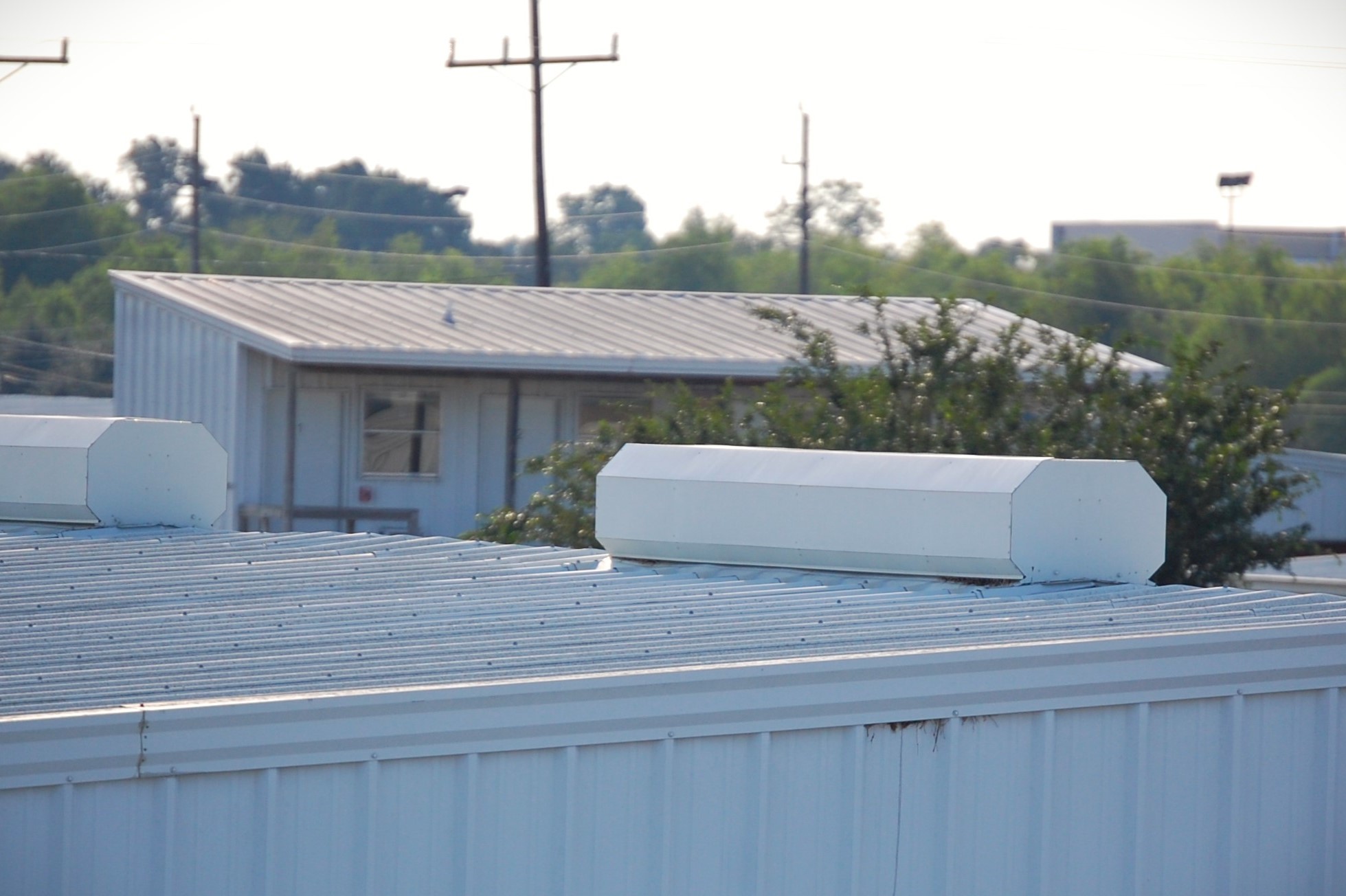Metal Building Roof Ridge Vent Mechanics and Maintenance
Placed atop your metal buildings, and with minimal work required following installation, the roof ridge vent is a prime example of an “out of sight, out of mind” accessory. In truth, however, this tool of the trade deserves some added thought.

When you give your metal building roof ridge vent the attention it deserves, it can serve you well for the long term.
Even low-maintenance building components require basic TLC to continue carrying out their work — and to provide the best possible benefits for your buildings and those who work inside of them. Here, Metallic Products’ construction pros delve into the finer points every metal building owner and contractor should know about the roof ridge vent. Read on for insights into everything from how it works to where potential problems lie and the best way to look out for it for the long term.
What is a Metal Roof Ridge Vent and How Does it Work?
Your metal roof ridge vent is a ventilation accessory that sits along the roof’s apex, or peak. Its goal is to draw hot, stale air, moisture, smells and fumes up and out of your building, and it does its job with help from overhead wind. When lower-pressure air blows over your ridge vent, higher-pressure air inside the building is ushered out.
Of course, the accessory isn’t acting alone. It works in conjunction with other ventilation components such as wall louvers, which draw fresh air in at the same time. When installed the right way — and in the right places — these metal building accessories team up to create healthier, more comfortable indoor spaces.
More from Metallic Products: Interested in delving deeper into how ridge vents work? Our hygrothermal dynamics blog post covers all the ins and outs.
Maintaining Your Ridge Vents to Last the Long Term
Modern-day steel buildings are engineered to serve their end users well for decades. When properly cared for, their ridge vents and related accessories can last nearly as long. The good news is, required maintenance tends to be minimal.
We recommend performing informal inspections at least twice per year — perhaps during the spring and fall seasons — to identify and address potential problem areas. Be on the lookout for the following:
- Structural Damage: Look for dented or cracked exteriors, metal punctures and signs of rust or corrosion. These issues have the potential to compromise your ridge vent’s integrity and result in leaks.
Loosened Fasteners: Check to ensure all screws and fasteners are in place and properly tightened. Loose fasteners may allow unwanted moisture to enter the roof system or leave ridge vents vulnerable to damage or movement, should heavy winds impact the area.
- Built-Up Debris: Clear unwanted material away from your ridge vents. The pine needles, leaves, twigs, bugs and dirt that make themselves at home on rooftops can block airflow and impact your vent’s effectiveness.
- Scratched Paint and Finishes: Although aesthetic imperfections won’t impact your ridge vent’s ability to do its job, it can affect your building’s look — and, potentially its property value. Make note of chipped paint and other such issues, and factor touchups in when time allows.
Protecting Your Buildings Against Ridge Vent Leaking
Ridge vent leaking ranks among the most common — and costly — issues associated with these particular accessories. And, although a quality manufacturer will do everything possible to ensure a finished product can withstand the elements, added vigilance on the end user’s behalf helps keep buildings protected.
Encourage team members to remain aware of their surroundings, and to report signs of ridge vent leaking as soon as they spot them. The quicker the response, the better your chances at keeping repair and replacement costs in check. Potential indicators of ridge vent leaking include:
- Uneven Ridge Lines: Visible sags along your steel building’s roof may indicate corrosion or structural issues brought on by moisture intrusion.
- Ridge Vent Rust or Corrosion: Such imperfections are both an eyesore and an indicator that the building accessory’s ability to protect against moisture has been impacted.
- Wall and Ceiling Discoloration: Brown stains are clear indicators not just that leaks are occurring, but they help identify where exactly the trouble lies. If a leak has gone this far, it’s a good idea to also check for plumbing and larger building envelope leaks.
- Earthy Smells: The distinct odor associated with mold and mildew growth is a sure sign that water is getting into the building.
- Puddled or Dripping Water: Although visible leaks are a given that trouble is brewing, collected moisture can be just as worrisome. Lingering puddles provide more opportunities for moisture to enter deal damage.
Thoughtful maintenance practices and a watchful eye help ensure your ridge vents will continue serving you well, but the best indicator of future success comes in securing a quality product from the start. Vet your metal building accessory providers to ensure the products you purchase suit your building’s needs, operational output and aesthetic.
Metallic Products offers two basic metal building ridge vent options. Our continuous ridge vents are ideal for large-scale industrial operations, while our low profile ridge vents, with more streamlined silhouettes, are better suited for smaller structures or those where the goal is for accessories to blend into the building’s look. Both varieties are available in a range of throat sizes, colors and finishes — and are customizable to suit every roof pitch. Florida approved ridge vents are also available for areas regularly impacted by adverse weather.
If you have questions about how the ridge vent comes into play for your metal buildings, or if you’re interested in learning how Metallic Products might assist with your next build, feel free to contact our team at any time. We’d love to help, and we look forward to hearing from you!



